Rubber and Polymer Sourcing for Automotive: A Hidden Supply Chain Risk
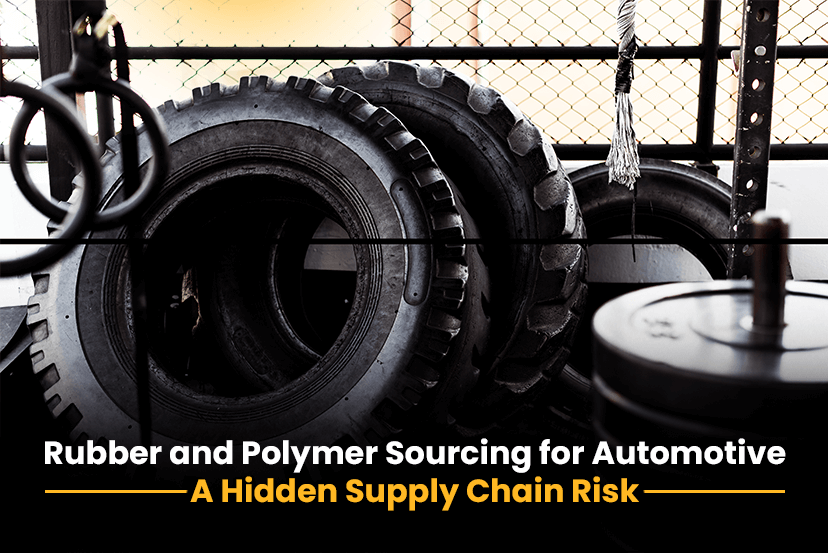
Rubber and Polymer Sourcing for Automotive: A Hidden Supply Chain Risk
When people speak of supply chain risks in the auto industry, they tend to turn toward semiconductors, steel, or rare earth minerals. Very few pause to think about rubber and polymers. Yet, take them away and the industry would grind to a halt. Cars wouldn’t have tires, seals, or hoses. These substances permeate the world around you, but you hardly ever hear about them.
In this blog dive, we’re going to talk about the ways rubber and polymers are sourced and why it matters for the automotive industry, what makes it especially tough for procurement pros to manage, and how the rise of EVs is reshaping demand.
The Role of Rubber and Polymers in Automotive Manufacturing
Manufacturers depend on two main streams: first, natural rubber, which is mainly extracted from plantations in Asia, and second, synthetic polymers, which are made from petrochemicals.
Natural rubber is important for its flexibility and durability, whereas polymers provide strength, heat resistance, and weight reduction. It generally helps in today’s fuel-efficient designs.
Every car contains far more rubber and polymer than most consumers realize. These materials are used extensively in:
1. Seals and gaskets that keep engines and transmissions airtight.
2. Hoses and belts that manage fluids and power transmission.
3. Bushings and suspension components that absorb shock and improve comfort.
4. Dashboards, bumpers, and interior trims made from synthetic polymers and resins.
In some estimates, polymers account for a vast volume in modern cars, especially as automakers focus more on lightweighting.
Even though they are a much smaller percentage of the total material cost than steel or aluminum, rubber and polymers are mission-critical. And if a factory runs short of polymer resins or critical rubber parts, entire assembly lines can grind to a halt.
Why Rubber and Polymer Sourcing Is Different From Other Materials
Rubber and polymer buying isn’t logic that applies to buying steel or aluminum. The issues are more complex.
1. Heavy Dependence on Southeast Asia for Natural Rubber
The rubber industry, for one, was geographically concentrated. Nearly 90% of it comes from Southeast Asia, largely Thailand, Indonesia, and Vietnam. It is produced all over the world, millions of small farmers at the mercy of weather, soil quality, and diseases.
2. Synthetic Polymers and Oil Price Linkages
Synthetic polymers are bound to the oil markets. They derive from petrochemicals, which means their prices many times behave in sync with crude oil. Any geopolitical shake-up in the world’s oil-producing regions can send polymers soaring, pinching automakers that are already running on razor-thin margins.
3. Stringent Quality Demands from Automakers
The bar for quality in auto is unusually high. Parts have to endure intense heat, pressure, and wear over multiple years of use. That implies procurement groups cannot just replace suppliers in the event of shortages. There is only a finite set of suppliers that can meet the standards on a consistent basis, further constraining the choices.
Hidden Supply Chain Risks in Rubber and Polymer Procurement
Risks involved in rubber and polymer sourcing tend to go unnoticed until they become severe.
1. One of the largest risks is environmental vulnerability. Rubber plantations are subject to climatic risks, floods, storms, or extended droughts can decisively affect yields. Crops have been ruined by diseases such as leaf blight. Piled onto this is increasing pressure to stop deforestation associated with rubber farming, leaving procurement leaders competing on cost and sustainability.
2. Price volatility has ever pursued these markets. Price volatility typifies natural rubber, whose prices have fluctuated wildly in the past few decades, while prices of synthetic polymers rise and fall with oil. For manufacturers producing on huge scales, these fluctuations ripple across whole product ranges.
3. Compliance and ESG pressures are also mounting louder. Car companies are being called upon to demonstrate that their sourcing is both sustainable and ethical. Joining initiatives such as the Global Platform for Sustainable Natural Rubber (GPSNR) is becoming less voluntary and increasingly a reputational imperative.
4. There are logistics and geopolitical risks. With all the production based in Southeast Asia, a disruption at ports or shipping lines can hold up deliveries globally. Shortages of containers during the pandemic showed just how exposed these supply chains are.
How EVs Boost Rubber and Polymer Demand
The shift to electrical mobility introduces even greater complexity. EVs do not contain engines in the conventional sense, but they rely heavily on sophisticated polymers and rubber products.
Battery packs, for instance, need specific polymer encasements and insulation to control heat and safety. Light polymers offset the tremendous weight of lithium-ion batteries to enable EVs to be more efficient. Thermal stability and water resistance are essential for battery safety, and rubber seals and gaskets have an even larger role to play in this case.
Even the tires vary. EVs need low-rolling-resistance tires that are capable of withstanding more torque and heavier loads without degrading prematurely. This necessitates proprietary rubber compositions, which further strain the supply.
Therefore, EV take-up doesn’t decrease reliance on rubber and polymers; it heightens it. Procurement leaders need to obtain not only greater volumes but also higher-specified grades of those materials.
Conclusion
Rubber and polymers might not top supply chain conversations the same way that semiconductors or lithium do, but they are not ones to be ignored. They are the unsung heroes of car performance, safety, and comfort. The issue is that their sourcing is accompanied by special vulnerabilities, geographic concentration, oil dependence, climate risk, and increasing ESG focus.
As EVs continue to grow, demand will only be higher, compounding procurement even further. What was once deemed “secondary” material is now at the forefront of the next generation of vehicle development.
Automotive procurement executives must go beyond cost. They have to think resilience, they have to think sustainability, and think diversified supplier base. Traceability technology spend, strategic supplier relationships over the long term, and sustainably sourcing programs will also be key to addressing these unseen vulnerabilities.
Is your company getting ready to build resilience in rubber and polymer purchasing?
Leverage Moglix Business to drive agility through end-to-end procurement solutions for sourcing rubber and polymer components. Turn your weakness in the rubber/ polymer supply chain into a strategic advantage with us. Get in touch today to see how our technology-driven platform can provide the visibility, reliabilit,y and cost savings your automotive venture needs.
Leveraging Data Analytics for Enhanced Supply Chain Visibility
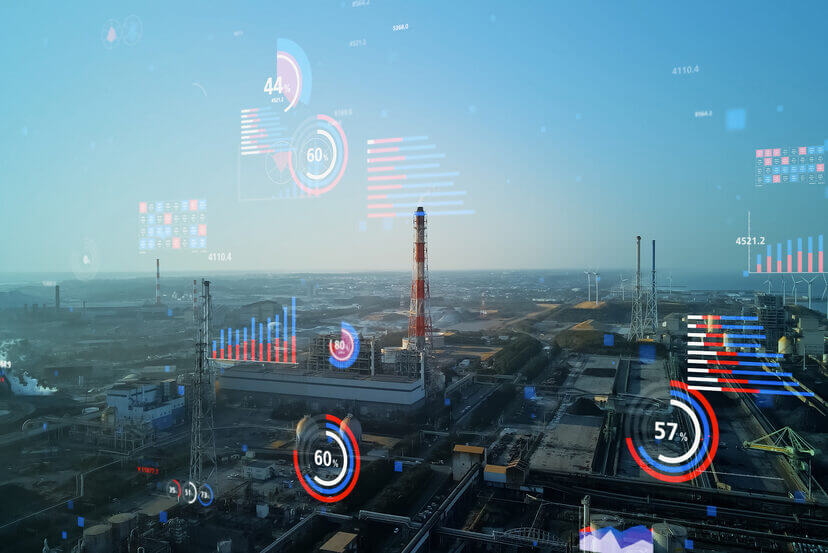
Leveraging Data Analytics for Enhanced Supply Chain Visibility
Supply chains are growing more complex with the expansion of global trade and rising customer expectations. To stay competitive, businesses need supply chain analytics to gain real-time insights, optimize operations, and improve efficiency.
Through data-driven decision-making, manufacturers and suppliers can better forecast, enhance inventory management, and minimize disruptions. In this blog, we’ll explore how supply chain analytics is transforming the industry and enabling greater visibility in manufacturing.
Supply Chain Analytics: A Game-Changer for Manufacturing
Supply chain analytics employs data and technology to track and analyze supply chain performance. It enables manufacturers to:
- Identify inefficiencies and bottlenecks
- Predict demand fluctuations
- Optimize procurement and inventory management
- Improve supplier relationships
- Reduce operational costs
With advanced data-driven decision-making, businesses can react swiftly to market changes and customer demands, ensuring smoother supply chain operations.
How Data-Driven Decision-Making Enhances Supply Chain Visibility
One of the biggest advantages of supply chain analytics is its ability to enhance visibility in manufacturing. Real-time data allows businesses to track shipments, monitor inventory, and anticipate potential disruptions.
Here’s how data-driven decision-making plays a role in supply chain visibility:
- Real-time Tracking: Sensors and IoT devices offer immediate updates on shipments, enabling businesses to swiftly respond to delays or route changes.
- Demand Forecasting: AI-powered analytics predict future demand trends, preventing stockouts or overstocking.
- Supplier Performance Evaluation: Businesses can assess supplier reliability and make informed decisions based on data.
- Risk Management: Predictive analytics can foresee supply chain disruptions and recommend contingency strategies.
With improved visibility in manufacturing, businesses gain full control over their supply chain operations.
Key Data Analytics Tools Transforming Supply Chains
Modern manufacturers use a range of data analytics tools to enhance supply chain analytics and improve efficiency. Some of the most impactful tools include:
- AI and Machine Learning – These tools analyze past trends to provide precise demand forecasts and recommend inventory optimizations
- IoT and Real-Time Tracking – Uses sensors and GPS to provide live supply chain updates.
- Big Data Platforms – Consolidate information from multiple sources to enhance decision-making.
- Cloud-Based Supply Chain Management Software – Facilitates smooth collaboration between teams and suppliers.
- Blockchain for Transparency – Provides secure and transparent tracking of goods from origin to delivery.
By implementing these tools, businesses can enhance data-driven decision-making and gain better visibility in manufacturing processes.
Benefits of Supply Chain Analytics for Inventory Management
Effective inventory management is a crucial aspect of manufacturing, and supply chain analytics plays a vital role in optimizing stock levels. Here’s how:
- Prevents Stockouts and Overstocking: Data insights assist businesses in maintaining the correct inventory balance.
- Reduces Holding Costs: Optimized stock levels reduce warehousing expenses.
- Improves Order Accuracy: Businesses can align inventory with customer demand trends.
- Enhances Supplier Coordination: Real-time inventory tracking ensures timely restocking and reduces delays.
With the right data-driven decision-making tools, manufacturers can maintain lean inventory levels while meeting demand efficiently.
Challenges in Implementing Supply Chain Analytics
While supply chain analytics offers numerous benefits, its implementation comes with challenges:
- Data Quality Issues – Data insights assist businesses in maintaining the correct inventory balance.
- Integration Complexity – Legacy systems may not easily integrate with modern analytics tools.
- Cybersecurity Risks – With more digitized supply chains, protecting sensitive data becomes critical.
- High Implementation Costs – Investing in analytics solutions may require a significant upfront investment.
Despite these hurdles, businesses that effectively implement supply chain analytics can secure a major competitive edge over time.
Take the Next Step Toward Smarter Supply Chain Management
As manufacturing and supply chains evolve, using supply chain analytics is becoming crucial for maintaining a competitive edge. With better data-driven decision-making and enhanced visibility in manufacturing, businesses can optimize operations, reduce costs, and improve efficiency.
At Moglix, we provide advanced supply chain solutions to help businesses harness the power of analytics. Whether you aim to enhance inventory management, improve supplier collaboration, or obtain real-time supply chain insights, Moglix has the expertise to support your transformation
Get in touch with Moglix today and take your supply chain analytics to the next level!
How Digital Supply Chains Are Transforming India’s Core Industries

How Digital Supply Chains Are Transforming India’s Core Industries
From Paperwork to Platforms: A Journey of Resilience and Reinvention
India’s industrial backbone including infrastructure, manufacturing, logistics, pharma, and energy has long relied on traditional, manual procurement systems. But that’s changing, fast. Today, the rise of the digital supply chains is rewriting the rules of B2B procurement, transforming a once paper-heavy, opaque system into a smart, seamless engine of growth.
The Evolution: From Paperwork to Platforms
For decades, procurement teams were buried in paperwork, approvals, and fragmented vendor communications. Not only did this slow down projects but also increased costs and reduced visibility. Enter digital supply chains powered by cloud platforms, real-time data, AI-driven demand forecasting, and end-to-end tracking.
Digital platforms have become the new control rooms of procurement. They unify processes, automate workflows, and enable real-time collaboration among buyers, suppliers, and logistics partners. What once took weeks now takes hours.
Industry-Wise Impact: Real Shifts, Real Results
Infrastructure
In a sector where delays can mean massive cost overruns, digital supply chains offer a clear edge. Real-time tracking of materials, automated purchase orders, and vendor performance analytics help infrastructure companies deliver on time and within budget.
Data Insight: Companies adopting digital procurement in infrastructure projects report up to a 25% reduction in turnaround time (TAT) and 15-20% cost savings due to reduced leakages and improved forecasting.
Pharma
Speed, compliance, and quality are paramount in the pharmaceutical industry. Digital supply chains ensure improved batch traceability, streamlined approvals, and minimized stockouts critical in a regulated and time-sensitive ecosystem.
Data Insight: Leading pharma manufacturers have seen a 40% improvement in supply chain visibility and 30% faster supplier onboarding through digital platforms.
Energy
For the energy sector especially renewables and oil & gas digital procurement enables smarter asset management and faster deployment. Predictive maintenance and just-in-time inventory reduce both downtime and operational cost.
Data Insight: Digital integration has helped energy companies cut procurement costs by 10-15% and enhance project execution speed by 20% or more.
Strategic Payoffs of Going Digital
- Cost Savings: Automated bidding and improved spend analytics lead to smarter supplier decisions.
- Time Optimization: Less paperwork and faster approvals accelerate project timelines.
- Compliance Ease: Audit trails, e-documentation, and real-time dashboards reduce risks and ensure regulatory compliance.
But perhaps the biggest win? is agility. In a world rocked by disruptions from pandemics to geopolitical tensions, having a flexible, digital supply chain isn’t just a choice. It’s a competitive necessity.
The Human Factor
Digital doesn’t mean impersonal. In fact, it’s the opposite. With fewer repetitive tasks, procurement professionals now focus on strategic vendor relationships, innovation sourcing, and long-term value creation.
As one procurement head at a leading infrastructure firm put it, “With our digital platform, we’re not just saving money. We’re saving time, stress, and missed opportunities.”
Final Thoughts
India’s industrial evolution is not just about new buildings, factories, or transport routes it’s about smarter systems behind the scenes. Digital supply chains are quietly yet powerfully redefining how industries operate, collaborate, and grow.
As we move forward, organizations that embrace digital procurement will not only streamline operations but also lead the next era of industrial transformation. Those who stick to outdated practices risk being left behind.
Ready to reimagine your supply chain?
It’s time to move from paperwork to platforms and unlock a new level of speed, savings, and success.
Local Sourcing in a Globalized World: A Balancing Act Between Resilience and Competitiveness

Local Sourcing in a Globalized World: A Balancing Act Between Resilience and Competitiveness
The concept of local sourcing has gained momentum in recent years. Triggered by the pandemic, reinforced by geopolitical shifts, and strengthened by the growing China+1 strategy, India like many other nations is rethinking how and where it sources goods. The pursuit of supply chain resilience, regionalization, and self-reliance is pushing industries to look inward.
But as India doubles down on local sourcing, a critical question arises: Is this shift scalable and sustainable in a globalized economy that thrives on specialization, cost efficiency, and international collaboration?
What’s Driving the Push Toward Local Sourcing?
1. Pandemic Fallout
The COVID-19 pandemic exposed the fragility of over-globalized supply chains. With factory shutdowns in China, delayed shipments, and inventory shocks, businesses and governments learned the hard way that relying on distant suppliers can come at a cost. Local sourcing emerged as a natural hedge.
2. Geopolitical Realignments and China+1
Trade tensions, rising tariffs, and concerns over excessive dependency on China have led to the rise of the China+1 strategy where companies seek alternative manufacturing hubs. India, with its large workforce and policy momentum (PLI schemes, Make in India), is positioning itself as a viable alternative.
3. National Self-Reliance Agenda
India’s emphasis on Atmanirbhar Bharat isn’t just a slogan it’s a policy direction. By promoting domestic manufacturing and reducing import dependency, the government is signaling its intent to strengthen local supply chains across critical sectors.
Sector Readiness: Who Can Truly Localize?
While the idea of local sourcing is appealing, its practicality varies across sectors:
- Pharmaceuticals: India has made strides in localizing APIs (active pharmaceutical ingredients), though full independence from China will take time due to cost and scale challenges.
- Electronics: A work in progress. While assembly lines are being set up locally, the country still depends heavily on imported components like semiconductors.
- Automotive and Engineering: Better positioned for localization. With a well-established vendor ecosystem and strong manufacturing base, many components can be locally sourced or developed.
- Textiles and FMCG: High readiness, thanks to existing domestic supply chains and consumer demand favoring “Made in India” products.
The Trade-Offs: Local vs Global
Cost Pressures
Global suppliers often benefit from economies of scale, driving down per-unit costs. Local sourcing may initially lead to higher production costs, impacting pricing and margins especially in price-sensitive industries.
Quality and Capabilities
Not all local vendors are equipped with the same technology, skillsets, or certifications. Maintaining international quality standards can be a hurdle without substantial investment in vendor development and training.
Scale Limitations
Matching the volume, speed, and efficiency of global giants will require time and infrastructure. Some raw materials and specialized parts may simply not be available locally at least not yet.
The Long-Term Lens: Resilience vs. Global Competitiveness
Local sourcing offers supply chain resilience, reduced lead times, and greater control. But going too far in this direction can limit exposure to global innovation, specialization, and price competitiveness.
The goal, therefore, shouldn’t be isolation but strategic regionalization. A hybrid approach that combines strong domestic capabilities with smart global sourcing may be India’s best path forward.
Supplier Relationship Management: A Complete Guide
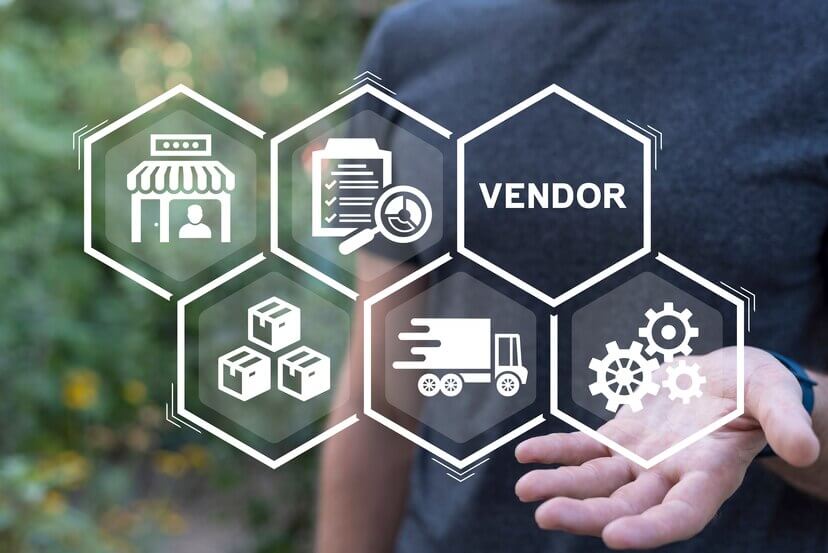
Supplier Relationship Management: A Complete Guide
Brief into Supplier Relationship Management
Supplier Relationship Management (SRM) is a structured approach to evaluating suppliers to identify their strengths, weaknesses, and overall significance to your business.
It is a part of vendor management within supply chain management. One can use SRM to categorize suppliers based on how valuable they are to the organization. This categorization ensures smooth operations and helps improve supplier performance.
Simply put, SRM focuses on fostering stronger relationships with suppliers and efficiently managing the products or services they deliver.
How to Develop Supplier Relationships?
Building strong supplier relationships requires trust, communication, and collaboration. Here are some effective steps:
- Clear Communication: Regular updates and clear expectations help avoid misunderstandings. Utilize meetings, emails, or shared platforms to maintain alignment. Performance Metrics: Establish measurable goals such as delivery timelines, quality benchmarks, and cost efficiency to assess supplier performance effectively.
- Mutual Benefits: SRM aims to create win-win scenarios by offering incentives or recognition to suppliers who consistently exceed expectations.
- Feedback Mechanisms: Maintain open communication channels for continuous improvement by actively seeking and providing feedback to suppliers.
- Technology Integration: Use SRM tools to streamline processes, track performance, and enhance collaboration.
Challenges Faced in Supplier Relationship Management
Despite the wholesome benefits of SRM, the implementation comes with its own set of challenges:
- Data Inconsistency: Without accurate data, evaluating supplier performance becomes difficult.
- Supplier Resistance: Some suppliers may hesitate to adapt to new processes or technologies.
- Cultural and Geographical Barriers: Working with global suppliers might lead to communication gaps.
- Balancing Cost and Quality: It’s no longer just about cutting costs. Finding the right balance between affordability and quality is important.
Businesses must proactively address these challenges by aligning their communication and setting clear expectations with their suppliers.
Benefits of Supplier Relationship Management
When SRM is done right, businesses can unlock numerous benefits:
1. Builds Trust with Suppliers:
SRM enables businesses to cultivate deeper partnerships with suppliers, transcending basic transactional relationships. It fosters trust, mutual understanding, and shared goals, enabling both parties to align on opportunities and tackle challenges together.
2. Reduces Risks:
SRM provides businesses with greater visibility into supplier activities, enabling them to identify and mitigate risks more efficiently. Using smart tools and strategies, companies can stay ahead of potential issues, making their supply chain more secure.
3.Better Insights into Supplier Capabilities:
SRM provides businesses with valuable data about what their suppliers can do. This helps in evaluating whether current suppliers can support new products or business models.
Best Practices for Better Supplier Relationship Management
To get the most out of SRM, consider these best practices:
- Invest in Technology: Leverage software that offers real-time visibility into supplier performance and inventory levels.
- Foster Transparency: Share demand forecasts and business plans with key suppliers to enhance trust and transparency.
- Segment Suppliers: Not all suppliers are the same. Segment them based on strategic value to prioritize relationships effectively.
- Regular Reviews: Schedule performance reviews periodically to highlight areas for improvement and acknowledge achievements.
We can Help!
Moglix offers vendor consolidation and management solutions, empowering businesses to establish seamless supplier relationships.
With tools that simplify vendor management, optimize procurement processes, and enhance communication, Moglix ensures businesses can focus on what matters most. From reducing costs to improving supplier community engagement, Moglix provides the technology and insights needed to strengthen SRM strategies.
______________________________________________________________________
Mastering Demand Forecasting and Inventory Management: The Key to Supply Chain Success
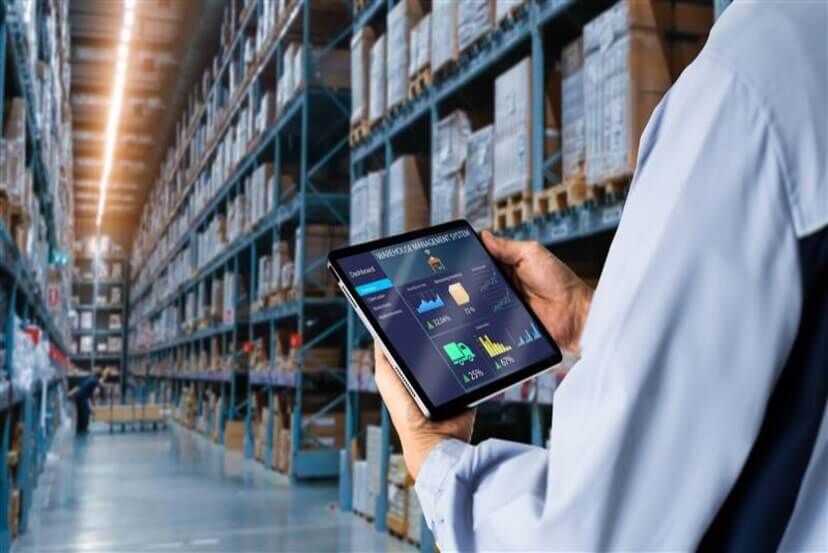
Mastering Demand Forecasting and Inventory Management: The Key to Supply Chain Success
Efficient supply chain management relies on two essential components: demand forecasting and inventory management. Together, these functions help businesses maintain a steady flow of goods, minimize costs, and prevent disruptions. When implemented effectively, these components optimize supply chain operations, allowing businesses to meet customer demands efficiently while maximizing profitability.
But how do these two elements connect, and how do they help achieve supply chain success?
Let’s discuss all these in detail through this blog.
What’s the Connection Between Demand Forecasting and Inventory Management
While demand forecasting and inventory management are distinct concepts, they are closely interconnected in practice. Accurate forecasting enables businesses to make informed inventory decisions, while effective inventory management ensures seamless fulfillment of predicted demand.
Critical Challenges in Balancing Demand and Inventory
Balancing demand and inventory presents significant challenges for businesses. Here are some common challenges faced:
- Inaccurate forecasting: Inaccurate demand forecasting can result in overstocking or stockouts, negatively affecting business profitability.
- Supply chain disruptions: Sudden delays or shortages of raw materials from suppliers can disrupt inventory planning.
- Seasonal demand: Fluctuations in customer preferences can affect the accuracy of forecasts, making it harder to adjust inventory levels appropriately.
- Dealing with Long Lead Times: Some industries, like manufacturing or global retail, face long lead times between placing an order and receiving the inventory.
- Rapid market changes: Sudden trends or competitor actions can make existing forecasts useless, leading to the loss of business time and money.
Proven Strategies for Better Forecasting and Inventory Control
To effectively manage demand forecasting and inventory, follow these simple yet impactful practices:
- Regularly Update Forecasts
Demand fluctuates due to changing market trends, customer behavior, and external factors. Regularly updating forecasts ensures accuracy and relevance.
- Collaborate Across Teams
Collaborate across departments like sales, marketing, finance, and operations to develop accurate forecasts and inventory plans.
- Use Different Techniques to Forecast
Not all products or markets behave the same way, so try various methods, such as historical data analysis, market research, or AI tools.
- Conduct Cycle Counts
Perform regular inventory checks to spot and fix errors early.
- Leverage Technology
Use technological tools such as Artificial Intelligence and machine learning for accurate demand forecasting and inventory planning.
- Track Key Metrics
Track key performance indicators like forecast accuracy, inventory turnover, and holding costs. This will help you find and fix any inefficiencies.
- Have a Backup plan
Have backup strategies for sudden demand spikes or supply chain hiccups.
How can Moglix help?
Moglix provides comprehensive supply chain management solutions designed to enhance demand forecasting and inventory management. With advanced tools and technologies, we empower businesses to improve forecasting accuracy and inventory control. Our solutions optimize stock levels, enhance demand and supply alignment, and create a more resilient supply chain.
Supply Chain Resilience: Prepping for the Future
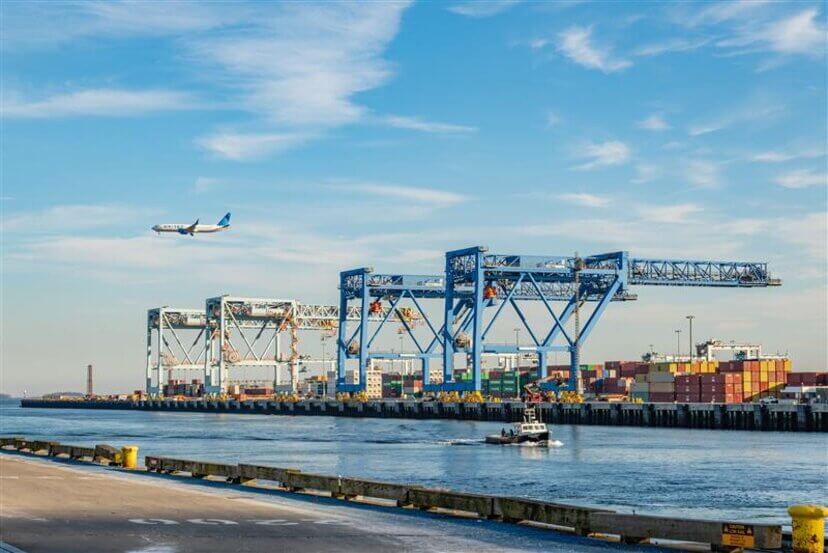
Supply Chain Resilience: Prepping for the Future
The global supply chain landscape has experienced unprecedented disruptions in recent years, spurring businesses to rethink their strategies. Companies have navigated disruptions like COVID-19, geopolitical tensions, and natural disasters, all threatening operations and profitability.
As the focus on supply chain resilience is intensifying, with emerging trends like nearshoring gaining traction. Let’s explore how businesses are adapting to mitigate risks, reduce costs, and stay competitive.
The Rise of Nearshoring
Nearshoring—relocating production closer to end markets—has become a key strategy for mitigating supply chain risks. Companies are increasingly shifting away from globalized manufacturing models that rely heavily on distant suppliers. This move addresses several critical factors:
- Mitigating Geopolitical Risks: Global tensions, such as trade wars and political instability, have exposed vulnerabilities in traditional supply chains. Nearshoring reduces risk exposure, ensuring operational continuity and smoother workflows.
- Reducing Shipping Costs and Lead Times: Rising fuel and transport costs are making long-haul shipping less practical. Nearshoring minimizes these expenses and significantly improves delivery times, allowing companies to meet customer expectations efficiently.
- Enhancing Supply Chain Agility: Proximity to suppliers and markets enables quicker adjustments to demand fluctuations, fostering an agile supply chain. Businesses can respond to changing market dynamics more effectively, gaining a competitive edge.
Key Trends Shaping Supply Chain Resilience in 2025
1. Embracing Digital Transformation
Advanced technologies are pivotal in building resilient supply chains. Tools like AI, blockchain, and IoT are revolutionizing the way businesses monitor and manage their supply chains. These innovations provide real-time visibility, predictive analytics, and enhanced decision-making capabilities, empowering companies to preempt disruptions and optimize operations.
2. Diversifying Supplier Networks
Over-reliance on a single supplier or region can be catastrophic during disruptions. Companies are diversifying their supplier base to build redundancy and reduce risks. Multi-sourcing strategies ensure that production and delivery are not entirely reliant on one geographic location.
3. Prioritizing Sustainability
Sustainability is no longer optional but essential. Eco-friendly practices are now integral to meeting regulations and consumer demands in supply chains. Nearshoring also aligns with sustainability goals by reducing carbon emissions associated with long-distance shipping.
4. Adopting Agile Methodologies
Agility is at the core of resilient supply chains. Agile methodologies, such as just-in-time (JIT) production and rapid inventory replenishment, help companies adapt quickly to market changes. This strategy helps businesses sustain operations during uncertainty.
Challenges of Nearshoring
While nearshoring offers significant benefits, it is not without challenges. Nearshoring may lead to higher labor costs and limited access to specialized talent compared to offshore options. Additionally, transitioning to a nearshore model requires careful planning, investment, and collaboration with local suppliers and governments.
Preparing for the Future
To thrive in 2025 and beyond, companies must prioritize supply chain resilience. This involves leveraging advanced technologies, diversifying supplier networks, and embracing nearshoring as a viable strategy. By adopting these measures, businesses can mitigate risks, enhance agility, and build a robust supply chain capable of withstanding future disruptions.
In conclusion, the shift toward nearshoring and other resilient strategies is more than a trend—it is a necessity. Businesses must proactively adapt to the evolving supply chain landscape to secure their long-term success. By adopting the right strategies, businesses can transform challenges into opportunities, driving sustainability and competitiveness in an unpredictable world.
Digital Twins in Supply Chain Management: Real-Time Insights and Predictive Maintenance

Digital Twins in Supply Chain Management: Real-Time Insights and Predictive Maintenance
Imagine a digital copy of yourself– a doppelganger, an identical twin in every way. This digital twin can handle all your digital tasks at home and in the workplace, seamlessly managing everything from complex calculations to daunting tasks that you might otherwise avoid.
Even better: This twin is impervious to pain, injury, or embarrassment, working tirelessly without any limitations, unlike the human body. Sounds mind-boggling, right?
Now, shift this concept to the world of supply chains, where digital twins aren’t just a concept but a powerful reality. For businesses, certainty is extremely important and the digital twin helps them achieve it. By replicating the supply chain process, digital twins are enabling companies to optimize performance, reduce risks, and drive innovation in ways that were once unimaginable.
Therefore, this concept is emerging as a game-changer for enterprises revolutionizing their supply chain operations.
In this blog, we’ll explore the evolving world of digital twins in supply chain management, their role in providing real-time insights, and their applications in predictive maintenance and inventory management. So, let’s begin.
What are Digital Twins and How Do They Work?
Digital Twins are virtual replicas/representations of real-world entities such as systems, persons, objects, or processes. They are designed to digitally represent, understand, and portray the structure of these physical entities accurately. These digital representations are made using data gathered from sensors and other devices embedded in the physical entity and synchronize with their historical and real-time data. These replicas can be of a jet engine, a building, a process, a big city, or even a field.
The concept of digital twins originated in manufacturing but has since expanded to various domains, including health care, urban planning, and supply chain management. They integrate techs like IoT (Internet of Things) sensors, AI (Artificial Intelligence), Cloud Computing, Simulation, Visualization, and Advanced Analytics.
A digital twin continuously collects information from the physical objects it replicates. This information includes everything from operational parameters like temperature and pressure to environmental conditions and usage patterns. By integrating IoT, AI, ML, and advanced analytics into the gathered data, professionals can create a digital model of the physical object.
Understanding Digital Twins in the Supply Chain
Digital twins in the supply chain are digital models that replicate the characteristics, behavior, and workings of the physical supply chain processes. They display everything involved in the supply chain management process, including machines, warehouses, manufacturers, distribution centers, transportation routes, and more.
The purpose of these twins is to get a comprehensive and real-time view of the entire supply chain. This enables businesses to monitor, analyze, and optimize their supply chain operations more effectively.
By creating a digital twin, companies can simulate situations, predict outcomes, and optimize performance without risking the actual supply chain. Furthermore, these twins help supply chain managers detect issues, improve efficiency, and enhance decision-making.
The Role of Digital Twins in Supply Chain Management
Digital twins play a transformative role in supply chain management by offering real-time visibility, enabling predictive analytics, and improving decision-making. Here we’ll discuss some pivotal roles of digital twins in the supply chain process.
1. Live Monitoring
Digital twins use sensors to provide a continuous, real-time view of the supply chain operations. This live information enables managers to monitor current performance and respond quickly with an action.
2. Demand Forecasting
By interpreting and analyzing real-time and historical supply chain data, digital twins can forecast demands. This helps businesses optimize their inventory levels and reduce the risks of overstocking or stockout.
3. Supply Chain Optimization
Digital twins can study various factors, such as transportation routes and warehouse efficiency to identify areas for improvement and suggest ways to optimize them, leading to cost savings and enhanced productivity.
For example, DHL has built a digital twin of its warehouse in Asia for Tetra Pak (a food packaging enterprise) to collect real-time information from its physical warehouse. As a result, its team can track the performance and look for alternate storage solutions.
4. Risk Management
Another critical role of digital twins is simulating potential disruptions, like supplier delays or transportation bottlenecks. This early risk detection allows companies to develop contingency plans and mitigate risks promptly.
5. Predictive Maintenance
Digital twins can predict potential failures by simulating the behavior of equipment and machinery. This allows supply chain managers to prepare for proactive maintenance and reduce downtime.
6. Collaboration and Transparency
Digital twins enhance communication and improve collaboration across the supply chain. This occurs by providing a shared and accurate view of operations to all stakeholders, resulting in a transparent approach.
7. Sustainability Initiatives
By optimizing processes, limiting energy consumption, and reducing waste, digital twins contribute to a more sustainable supply chain. This practice empowers companies to meet environmental goals and global standards.
Microsoft is leveraging digital twin technology. It has successfully incorporated carbon emission data into its core metric and reduced carbon emissions by 40% while gaining profitability.
Applications of Digital Twins in Predictive Maintenance
Predictive maintenance is a proactive approach that focuses on early detection of failures or disruptions. Digital twins play a crucial role in this process by providing a virtual representation of physical entities, allowing businesses to monitor and analyze their condition in real time. Following are some ways digital twins enhance predictive maintenance:
1. Real-time Tracking- Digital twins continuously track and collect data from sensors implanted in the types of equipment. This real-time data automatically feeds into the digital model, which reflects the physical entity’s condition and performance.
2. Anomaly Detection- Digital twins can identify anomalies and indicate errors or issues by comparing real-time data with historical performance.
For instance, a minute increase in vibration might signal a misalignment or error in machinery. This detection will allow maintenance teams to address the problem before it leads to a massive failure.
3. Predictive Analytics- Using advanced analytics and ML, twins analyze gathered data to predict the likelihood of a component failing. This predictive capability enables businesses to timely schedule maintenance, minimize disruptions, and extend the lifespan of components.
4. Remote Maintenance- In some situations, digital twins offer remote maintenance, where the technical team can diagnose or fix issues without being physically present.
5. Scenario Simulation- Digital twins can simulate “what-if” scenarios to understand how different strategies might impact operations’ performance and cost.
For example, they can estimate the impact of delaying maintenance, enabling managers to make informed data-driven decisions that balance cost with reliability.
Inventory Management Using Digital Twins
Inventory management is critical to supply chain operations, involving monitoring, tracking, controlling, and optimizing inventory status. Digital Twins offers cutting-edge supply chain management solutions for enhancing inventory management by providing a real-time view of inventory across the entire supply chain.
1. Inventory Visibility and Transparency- Digital twins provide a clear and transparent view of inventory across the supply chain, accessible to all the stakeholders. This enhanced visibility ensures that everyone from procurement to sales teams has access to the same accurate data. It facilitates better decision-making and collaboration.
2. Optimized Supply Chain- Twins can simulate different supply chain scenarios, such as lead times and transportation disruptions. By analyzing these scenarios, businesses can find the optimal inventory stages and locations to minimize costs. This will help balance inventory across the supply chain, reduce overhead costs, and improve operational efficiency.
3. Automated Replenishment- Based on real-time data and predictive analytics, digital twins can automate the replenishment process. When inventory levels reach a predefined threshold, digital twins automate orders to suppliers, ensuring continuous product availability while minimizing surplus stocks.
4. Improved Customer Service- With precise inventory management, businesses can ensure product availability and timely delivery, ultimately enhancing customer satisfaction. Additionally, digital twins enable order fulfillment without any errors, leading to improved customer service.
The Bottom Line
Adopting digital twin technology in the supply chain brings a myriad of benefits. Businesses can leverage these virtual replicas to improve their supply chain efficiency, streamline operations, and bring transparency to the system. Enterprises can use them to foster innovation and gain a competitive edge in today’s business environment.
To utilize the full potential of this emerging technology, companies should work with skilled professionals. Partner with Moglix a trusted B2B Commerce firm that offers end-to-end supply chain solutions. We have years of experience in delivering top-notch services to clients.
Explore how Moglix can help optimize your supply chain with cutting-edge procurement solutions and data-driven insights. With our expertise in supply chain management and advanced digital tools, we help businesses enhance efficiency, reduce risks, and achieve sustainable growth.
Procurement’s Role in Achieving Net Zero Goals

Procurement’s Role in Achieving Net Zero Goals
Due to increasing greenhouse gas emissions, the world is witnessing the challenge of climate change. The carbon emissions blanket the Earth, trapping the Sun’s heat, leading to global warming and changes in climatic conditions.
According to the UN Climate Action, businesses are the biggest contributors to climate change. They account for 75% of global greenhouse gas emissions and about 90% of carbon dioxide emissions.
Companies heavily rely on burning fossil fuels—coal, oil, and gas—to extract raw materials, manufacture, and transport goods. As a result, gases like carbon dioxide, methane, nitrous oxide, and CFCs pollute the atmosphere.
As more companies acknowledge their responsibility to reduce carbon emissions, procurement teams are increasingly pressured to implement strategies that mitigate the impact of climate change. Hence, procurement teams are finding ways to implement sustainable measures and set net zero goals.
In this blog, we’ll explore net zero goals in detail, why they are important, and discuss the role of procurement strategies in achieving the company’s net zero goals. After the end of the blog, you’ll be equipped with strategies to help combat climate change and attain net zero emissions.
What are net zero goals?
Net zero goals refer to a state in which greenhouse gases emitted by a company are balanced by those removed from the atmosphere, with a net zero impact on the environment.
It is an internationally agreed-upon goal implemented by enterprises worldwide to reduce global warming and gas emissions. The goals are carried out to reduce the amount of carbon emissions in every way possible through sustainable practices.
According to the United Nations Climate Action Organization, net zero refers to reducing carbon emissions to a level that allows nature to completely absorb and store them without disturbing the balance of the atmosphere.
For businesses, setting net zero goals is not just about meeting regulatory requirements; it’s also about aligning with global efforts to combat climate change. It’s about fostering sustainable growth and minimizing your environmental impact, ensuring long-term success in an evolving global market.
Why net zero is important?
Net zero is not just a corporate responsibility, it’s a crucial step in safeguarding the future of our planet. It is vital for businesses as it helps in navigating climate change, gain a competitive edge, and stay sustainable in the long run.
In the current scenario, many consumers are inclined to support businesses prioritizing sustainability and net zero goals. Consumers have become more conscious of products and the company’s environmental impact.
A Statista study revealed that 44% of consumers today are more likely to purchase products from brands committed to sustainability.
Moreover, governments are increasingly implementing regulations to compel companies to control their emissions. By setting and achieving net zero goals, companies can mitigate regulatory risks, meet consumer expectations, and position themselves as leaders in the transitioning low-carbon economy. Aside from cleaning the environment, net zero helps businesses grow, save costs, and increase resilience.
How do procurement strategies contribute to achieving net zero goals?
We realize it’s the need of the hour, but can procurement really achieve net zero? Several believe that net zero is an unachievable target and is doomed to fail. Amidst the challenges, there’s a need to be hopeful.
Procurement strategies come to the rescue for achieving net zero goals because they directly impact businesses’ supply chains. Below are some procurement strategies that can drive sustainability and achieve net zero objectives.
1. Sourcing Sustainable Materials
Prioritize sourcing materials with a lower environmental impact, focusing on renewable, recyclable, and low-carbon options to reduce the carbon footprint in your manufacturing processes.
For example, at Moglix, we procure materials that align with renewable energy sources such as solar panels, biomass briquettes, and green hydrogen. Through this initiative, we directly contribute to reducing the carbon footprint in manufacturing.
Additionally, we use these materials to replace fossil-fuel-dependent alternatives, helping achieve net zero emissions while supporting the use of eco-friendly raw materials.
2. Partnering with Eco-Friendly Suppliers
Choosing suppliers who align with sustainability standards and share net zero commitment can contribute to more sustainable growth. Eco-friendly suppliers adopt energy-efficient processes, actively minimize waste, and implement practices that significantly reduce carbon emissions.
Long-term partnerships with such suppliers foster collaboration and lead to innovation and reduced environmental impact. Additionally, these strengthened relationships can help ensure a more resilient and responsible supply chain. By leveraging this procurement strategy, companies can adapt to evolving global environmental standards and meet consumer expectations.
For example, we continuously work with suppliers to ensure they adopt energy-efficient processes and minimize waste generation. These collaborations encourage the development of innovative, green technologies that contribute to achieving net zero emissions.
3. Implementing Green Procurement Policies
Implementing green procurement policies not only minimizes environmental impact but also leads to significant cost savings by optimizing resource use and reducing waste, making your operations more efficient. Implementing these policies into business operations facilitates sustainability in the procurement process. These policies require procurement teams to consider environmental criteria, one of the ESG (Environmental, Social, Governance) criteria, while making purchasing decisions.
The E criteria might include evaluating the carbon footprint of the material, assessing the supplier’s sustainable approaches, and emphasizing purchases that align with the company’s net zero goals. These policies ensure consistency in sustainable practices and foster an environmental responsibility in the organization.
At Moglix, we integrate green procurement policies that emphasize the use of low-carbon alternatives. These policies are reflected in our procurement framework, which incorporates circular economy principles and prioritizes recycled and sustainable materials
4. Promoting Low-Carbon Economy Practices
Procurement strategies can support the low-carbon economy by prioritizing materials with low carbon emissions. By using reused, recycled, and repurposed materials, teams can lower the overall carbon footprint of the process. For instance, companies might choose easy recycling materials over materials taking longer to decompose in the environment.
5. Encouraging Supplier Innovation
Procurement professionals can encourage suppliers to innovate sustainable resources that fulfill net zero goals. Incorporating sustainable criteria while selecting suppliers will ensure that they align with the company’s values and net zero goals. The selected suppliers can contribute to more sustainable products and processes.
The innovation involves investing in renewable energy, adopting more efficient manufacturing practices, or reducing the carbon footprint of logistic operations. When suppliers are motivated to innovate, the entire supply chain becomes sustainable, contributing to overall sustainable growth.
For example, our push towards biomass-based energy solutions and waste-to-energy technologies enables suppliers to align with our net zero vision .
6. Reducing Waste in the Procurement Process
Minimizing waste in itself is the biggest contributor to achieving net zero goals. It can be accomplished by reducing packaging waste, optimizing orders to avoid overproduction, and minimizing returns.
For instance, companies can collaborate with suppliers to develop eco-friendly packaging solutions like ours or adopt just-in-time procurement strategies to reduce overstocking, ultimately cutting down waste and emissions.
At Moglix, we’re our logistic operations by promoting fuel-efficient and hybrid vehicles to reduce carbon emissions from transportation. We also use biomass-based energy solutions and waste-to-energy technologies to promote our net zero vision.
7. Supporting Local Sourcing
Another effective strategy for reducing greenhouse gas emissions is sourcing goods locally. By sourcing materials and services locally, companies can reduce carbon emissions caused by transportation.
This approach will drive the growth of local economies and reduce the risks of supply chain disruptions. Often, local products are costly, but the environmental benefits and reduced carbon footprint can outweigh the extra cost when considering long-term sustainability goals.
8. Leveraging Technology
By integrating advanced tools and technologies in procurement, businesses can track and verify the sustainability of suppliers and their materials. Tools like blockchain, AI-driven analytics, and ML enable teams to monitor their products’ environmental impact in real time. These techs identify inefficiencies, optimize resource usage, and ensure that suppliers meet sustainable standards, making procurement a key driver of net zero goals.
9. Educating and Training Employees
Educating and training employees and suppliers on sustainable practices can help businesses achieve net zero goals. By organizing workshops, seminars, and training sessions, procurement teams can educate employees about the importance of sustainability and eco-friendly practices.
Educated and well-informed suppliers and teams are prone to make informed decisions that align with the company’s sustainability objectives. This results in a consistent and impactful approach to achieving net zero goals.
10. Empowering Stakeholders to Reduce Carbon Footprint
Another crucial strategy is empowering stakeholders to reduce their carbon footprint in every way possible. This can be attained by equipping them with tools, resources, and incentives to implement sustainable practices.
For example, procurement teams can partner with suppliers to develop sustainable products or offer incentives to stakeholders who suggest ways to reduce carbon emissions. By empowering stakeholders with something extra, businesses can drive innovation for net zero and create a sustainable business ecosystem.
Summing Up
As businesses encounter increasing pressure to address climate change, procurement’s role in achieving net zero goals is now more critical than ever. By adopting these strategies, companies can not only protect the environment but also secure their future in a competitive, low-carbon economy. Additionally, Businesses that reduce greenhouse gas emissions across the entire supply chain can lower their environmental impact and strengthen their position in the market as carbon-neutral players.
How can Moglix help your business achieve net zero emissions?
At Moglix, we strongly believe in innovating solutions and proactive measures to pave the way for a greener, emission-free, and more resilient future for businesses. Our solutions align with global sustainable standards, fostering a positive impact on society and the environment. With experts and professionals by our side, we can help your business reduce its carbon footprint and reach net zero.
The Impact of Geopolitical Risks on Global Supply Chains and Procurement Strategies
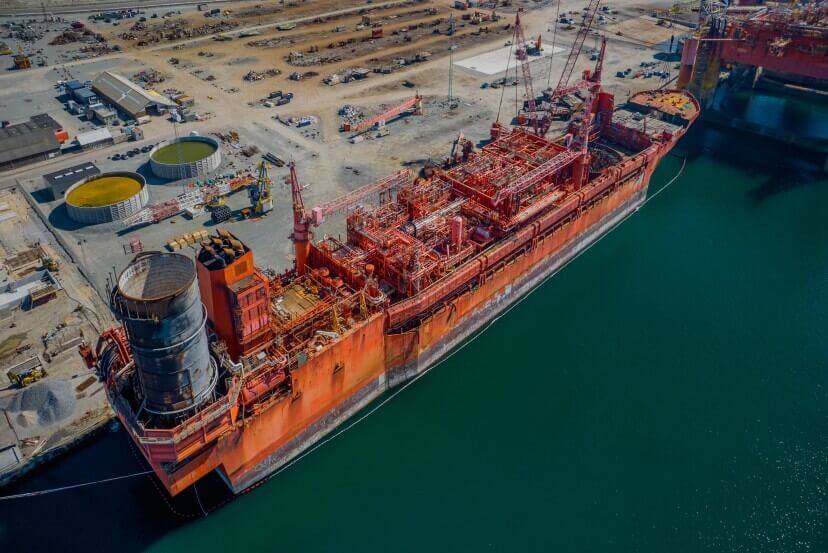
The Impact of Geopolitical Risks on Global Supply Chains and Procurement Strategies
The World Economic Forum’s survey report in 2023 revealed that more than half of respondents (54%) anticipated instability and risks of global crises in 2024, with geopolitical events driving at the front seat.
The events including trade wars, political events (elections), regional conflicts, etc are quite the concerns. These growing threats are directly or indirectly impacting businesses’ supply chains leading to delays, disruptions, increased costs, and material shortages. To navigate these complexities, businesses should stay informed about geopolitical risks and develop strong procurement strategies to mitigate them and maintain supply chain resilience.
Today, we’ll explore geopolitical risks and their impact on the global supply chain of businesses. Additionally, we’ll share the current geopolitical crises of 2024 and their effect on businesses operating globally and also suggest some strategies to mitigate these risks and ensure business continuity in an increasingly evolving world.
So, let’s get started!
What are Geopolitical Events & Uncertainties?
Simply put, Geopolitical events and uncertainties are unpredictable risks arising from disruption caused by uneven political or diplomatic relations between nations. These risks can take any form, including political instability, military conflicts, international wars, terrorist threats, economic crises, geographical events, and climate risks.
These risks can directly or indirectly affect the global economy and businesses. The direct impacts are surging prices, increased uncertainties, financial transaction issues, capital control, and higher transportation risk. The indirect effects include disrupted trade flow, shortage of resources, higher inflation, and risks in the supply chain. Typically, geopolitical risk occurs when a major conflict, a shift in power, or a national crisis happens from a nation’s involvement in international matters.
For example, U.S. elections will have a significant impact on all the global economies. The U.S. is one the most powerful nations and with its elections comes several uncertainties and potential risks as new powers and agendas might overtake.
These risks equally impact both the nation itself and the global community around the world. Unlike other types of risks, geopolitical risks are quite difficult to predict and come as an unexpected shock and they might escalate or create massive challenges for businesses.
Currently, globalization has become a major contributor to fueling these risks as businesses across the globe are increasingly interconnecting different economies by exchanging goods and services. Now, the major focus of businesses operating worldwide is to understand how these risks are affecting their supply chain system. And come up with new procurement strategies to help build resilience, adapt to modern marketing challenges, and prepare for unforeseen risks.
How do Geopolitical Risks Affect the Global Supply Chain?
Geopolitical risks are indeed a game-changer for businesses; they can disrupt a business’s healthy supply chain in a fraction of the time. As companies increasingly shift to the international level to source materials, manufacture products, and distribute goods, the impact of geopolitical events has become more critical. Below is an analysis of how these risks can affect the supply chain:
1. Disruption of the supply chain
In various situations, geopolitical risks can disrupt the complete supply chain system. For instance, a war outbreak can put manufacturing plants, transportation systems, and communication mediums on hold. Such disruption can cause a global level of supply shortage and a halt of production, resulting in significant financial losses.
2. Delay in delivery
When geopolitical tensions, such as trade wars, labor strikes, or regional conflicts emerge, it can lead to delayed delivery times. In case of political instability in regions with manufacturing and shipping setups, transportation routes may be disrupted and ports might be closed. These kinds of situations can lead to delays in the delivery, affecting scheduled deliveries, and unfulfilled customer demands.
3. Increased transportation cost
The emergence of a geopolitical crisis can lead to a rise in transportation costs. For example, situations like the imposition of tariffs, rerouting transportation to avoid conflict zones, or increasing security measures can inflate the cost of transportation moving goods across borders. Additionally, finding alternative routes or transportation to avoid risky regions might drive up expenditure, overall impacting the supply chain budget and profitability of businesses.
4. Shortage of materials
Geopolitical events can disturb the supply of raw materials, resulting in a shortage of materials. Let’s understand it with an example, there’s conflict in a region rich in essential minerals and due to this, the local government has limited access to these materials. During such conflicts, material shortage can lead to a delay in production, forcing companies to seek resources from other suppliers, which may not stand out in quantity or quality requirements. This can ultimately disrupt the production process.
5. Fluctuation in currency value
Geopolitical instability and events can lead to fluctuations in currency values, creating financial uncertainty. Businesses operating globally can encounter currency unpredictability, affecting the cost of imports and exports, and resulting in uncertain pricing and profit margins. For instance, a sudden devaluation of a supplier’s national currency could reduce costs or might signal economic instability, leading to a reevaluation of business relationships.6.
6. Changes in trade policies
Sudden changes in the trade policy including imposition of tariffs and import/export restrictions can occur during geopolitical tensions. These policy shifts can create barriers for businesses to trade, forcing companies to quickly adapt or face the risk of losing their market. Such unpredictable trade policy changes can make long-term planning difficult for businesses.
7. Shift in supply-demand
Geopolitical risks can impact the balance of supply and demand in the global markets. For instance, a conflict in a major oil-producing region can reduce the supply of oil, driving up its prices, and impacting industries depending on fuel. Similarly, sanctions on a specific country can lower the supply of goods from that nation, while increasing the demand for fuel in other regions. This shift in supply-demand can lead to price hikes and supply chain disruptions.
Some recent geopolitical events impacted the Supply Chain
The rising tension and geopolitical events between countries can impact the global supply chain. Here are two such geopolitical crises from 2024 that might affect several businesses’ supply chains:
The Red Sea Crises

Image source: U.S. Energy Information Administration
Yemen Houthi group has attacked cargo ships in Bab al Mandbeb Strait from the southern side of the Red Sea. This launch has caused many global shipping and oil companies like Maersk and British Petroleum to halt their transportation in that area and suspend shipments.
Hence, ships of these companies are avoiding their route from Europe to Asia, especially Egypt’s Suez Canal. This canal was considered the maritime route connecting Europe and Asia, accounting for 12% of the world’s shipping traffic. This crisis is directly causing shipments to travel longer routes, adding cost to transport, and increasing oil prices.
The U.S.-China Tension
The rising U.S.-China trade tension will continue to impact the global supply chain. The US has imposed export restrictions on China, particularly in the tech sector due to intellectual property concerns. This intensified trade tension between both nations. As a result, the trade of Liquified Natural Gas (LNG) between them is fueling a spark in their relations as China is a major importer of US LNG.
Now in response, China has imposed its own export restrictions on gallium, germanium, and other metals which has caused an increase in commodity prices, further complicating the entire global supply chain economy.
Procurement Strategies to Mitigate Risks in the Supply Chain
Businesses in order to mitigate risks should implement strong procurement strategies, catering to their specific needs. Following are some of the strategies that can help businesses save from impromptu geopolitical crises:
1. Digital supply chain
Digital supply chain helps in predicting geopolitical risks by using tools and tech to analyze data, identify patterns, and predict potential disruptions. These technologies include Artificial Intelligence, the Internet of Things, Predictive Analytics, and Blockchain to monitor supply chain operations, enabling companies to detect and spot potential risks early and manage them in real time.
2. Consider nearshore or reshore strategy
Businesses should consider adopting a nearshore or reshore strategy to mitigate risks associated with long-distance shipping. This ensures reduced risks or disruptions related to long-distance shipping and shortened delivery times.
3. Smart Inventory Management
Adopt a lean inventory management strategy, like just-in-time (JIT) management, to avoid overstocking. Similarly keep stocks of essential items as a backup to protect against shortages.
4. Work with multiple suppliers
Instead of relying on just one supplier for importing materials or commodities, work with multiple suppliers. It will help businesses reduce risks of geopolitical instability and ensure backup options.
5. Build Strong Supplier Relationships
Invest in long-term relationships with the suppliers. This will improve their ability to manage risks, deliver on time, and boost their overall performance and reliability.
In a Nutshell
Geopolitical risks and events have the potential to impact the supply chain operations of businesses globally. To reduce the impact of these risks, businesses should follow comprehensive approaches and strategies. The strategies enable them to identify potential disruptions, mitigate the risks, build durability, and align with global market changes.
Apart from integrating mitigation strategies, companies can boost their supply chain operations by leveraging modern tools and techs. Additionally, by developing emergency backup plans, enterprises can facilitate long-term relationships.
Is your Supply Chain ready to mitigate the Geopolitical Risks?
If not, Moglix can help you mitigate disruptions and ensure business continuity. Our Supply Chain Risk Management Solutions understand the crucial importance of managing supply chain risks for the seamless operations of your business. Our solutions can empower you to identify, assess, and navigate potential risks, ensuring continuity and durability worldwide.
